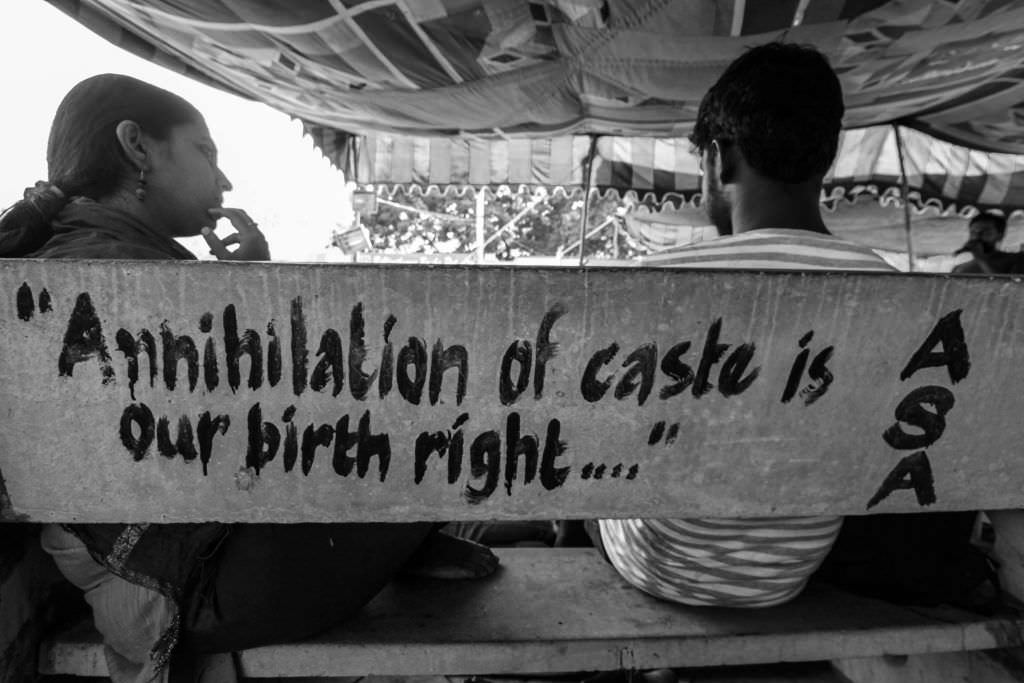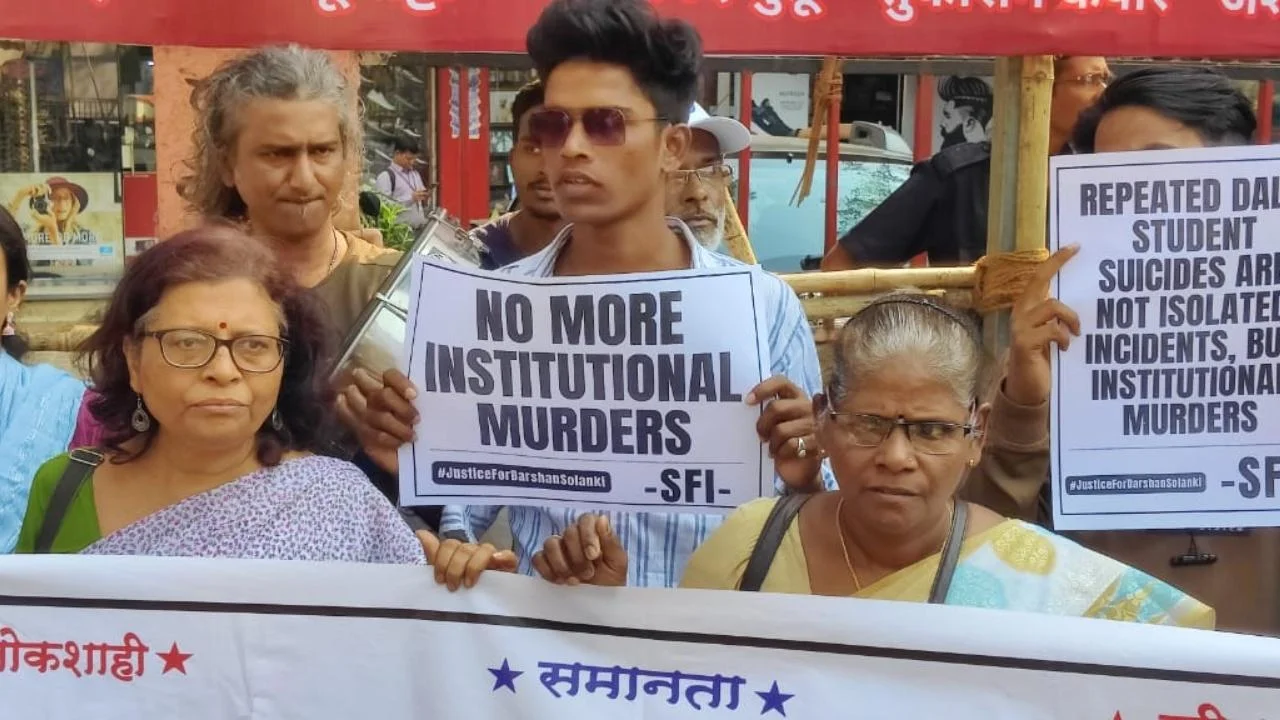The Justice for Rohith movement has faced violence and university crackdowns, and a conspicuous silence from mainstream media – but simultaneously, it has been documented, spoken about, and shared online and even live-streamed by students from the university. It has been a powerful, radical movement that has questioned caste discrimination within universities and colleges, academia and research, and at the hands of those supposed to upholding so-called ‘standards of excellence’ and ‘merit’ in these universities. The five students who were socially boycotted and ostracized from their academic spaces and hostels chose to create a makeshift space and called it the velivada.
Today, months later, after the institutional murder of Rohith Vemula, and the violent arrests of the students and teachers in March, the velivada remains a site for protest, resistance and defiance of a casteist university vice chancellor and administration. It is also a space from which larger questions have been asked of the nation-state, of caste hierarchies, and of not only those who arrested the students, but also those who remained silent when the arrests and blockade happened.
The velivada symbolises the social exclusion that the purportedly ‘inclusive’ public space of the university practises – and the double standards that were in place when the students went to the Vice Chancellor’s lodge to protest his return and were told it was ‘private’ property. Rohith, Dontha Prasanth, Vijay Kumar, Sheshaiah Chemudugunta and Sunkanna Velpula were denied this very public space that the university promises to its citizens (or ‘inmates’ now, as one circular from HCU recently said) by way of explicit casteist social boycott, while Appa Rao continues to hide out on ‘private property’. As Professor Ratnam too has pointed out, Appa Rao never came and paid his respects after Rohith’s death, never entered the velivada, and the only reason why the administration now wants to see, really see the velivada – is to destroy it. Appa Rao has multiple criminal cases against him – and is still free to walk around. The demands of the movement – for a Rohith Act, for the proper implementation of the Thorat Committee Recommendations, a public apology from the university, and others – have not been addressed by the administration.
Photographer Javed Iqbal photographed the velivada over the course of few days – speeches, performances, conversations, and the slogans, photos and quotes that make up this space. This movement may not be televised by corporate owned media, but it has seen an extraordinary depth of self-documentation. Some of the first reports of the blockade, denial of food and the cutting off of the Wi-Fi came from statuses made by students on Facebook, like the ones by Vaikhyari Aryat (compiled here at RoundtableIndia), videos by DalitCamera Ambedkar and photos by Avnish Kumar, a student at HCU who has also made a compilation of videos titled “This Revolution Will Never Be Televised“. For official updates on the current situation, follow the Joint Action Committee for Social Justice’s page.

The Rohith stupa that has been created and installed at the velivada, and the portrait of Babasaheb Ambedkar that he once carried. The university administration has considered taking down the entire structure.

Azadi from Hindutva, this graffiti demands. The movement has asked complicated questions about the relationship of casteism and communalism, and the intertwined nature of the fight that these students have faced. Hindutva, as many of the protesting students have eloquently explained, is not merely ‘fascism’ or ‘right wing’ politics, but deeply interrelated with casteism and caste hierarchies.

A powerful, symbolic sculpture that was erected at the protest site. The JAC has been conducting ‘Eklavya Speaks’ programmes where Dalit bahujan students have spoken out publicly about their experiences of caste discrimination in the university.

Posters, slogans and artwork on the walls.

A portrait of Babasaheb, words in memory of Rohith, and Charu Mazumdar’s words coexist here.

A bust of Babasaheb Ambedkar, surrounded by photos of the Buddha, Savitribai Phule, Jotiba Phule, Periyar, Ayyankali and Rohith.

From Javed Iqbal’s own caption, “Dontha warns that they dare not touch their Rohith Stupa.
‘Everytime there is a massacre or a killing of Dalits, just like in Tsunduru, a memorial comes up, a bust of Ambedkar. ‘They should not touch this memorial, I must remind them we come from a caste of gravediggers, and we will bury them if they try.’”

One member of the library staff, known fondly as Sebastian anna has stood by the movement and the students from the very beginning. He spoke about his own experiences of caste discrimination, the university, Appa Rao, and his faith in the students. Listen to his speech here.

Music and multilingual protest songs have been performed at the velivada, as have been other programmes and discussions.

Posters of Rohith and Chalo HCU visible around the campus bookshop as well, as students sit.
All photographs belong to Javed Iqbal and have been posted here after his explicit written consent. The full album can be accessed here, and Javed Iqbal’s full photography portfolio here.
About the author(s)
A political science student, reader and researcher




